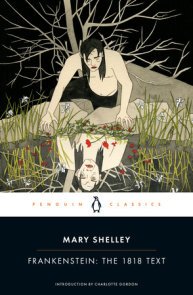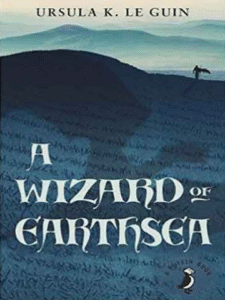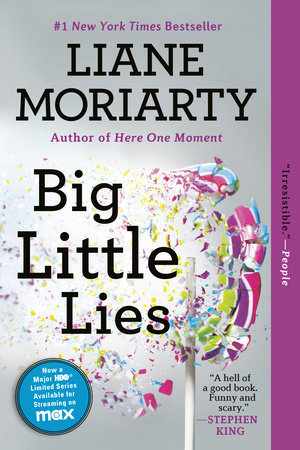Characters are essential to literature. They bring stories to life and make events emotionally impactful, helping readers connect with the narrative. Throughout history, from ancient tales to modern books, characters have represented the emotional core of stories. They allow us to reflect on our identities and struggles as they showcase the conflicts and truths that shape our humanity.
Studying literary characters matters because it connects to our personal experiences. They blend art and psychology, serving both as parts of the story’s design and as reflections of real human emotions. In this article, we are going to illustrate the types of characters using three well-known novels:
(Affiliate links may earn us a little, but not always. The price stays the same for you in any case.)
- Frankenstein by Mary Shelley (1818)
- A Wizard of Earthsea by Ursula K. Le Guin (1968)
- Big Little Lies by Liane Moriarty (2014)



Types of Characters in Literature
Characters can be classified in many ways – by their role in the story, by how they change (or don’t), and by their moral alignment or psychological depth. These types serve different purposes within a narrative and help structure the plot, evoke emotional responses, and convey themes.
Characters can be classified in many ways – by their role in the story, by how they change (or don’t), and by their moral alignment or psychological depth. These types serve different purposes within a narrative and help structure the plot, evoke emotional responses, and convey themes.
Here we are going to examine the different kinds of characters in fiction according to their role and function.
Role vs Function: The Cogs in the Story Machine
Function in Fiction
A character’s function in a story refers to what they do and how they affect the plot. Essentially, it answers the question: ‘What purpose does this character serve?’ It informs how they advance the story, create conflict, or develop themes.
Role in Fiction
The role in fiction describes the character’s position within the story, especially in relation to other characters. It asks: ‘What type of character is this in the story?’ It categorizes them based on their relationships and contributions. A character might be a protagonist (the main character), antagonist (the main opponent), mentor (a guide), or sidekick (a loyal friend).
1. Protagonist: The Driving Force
The protagonist is the central figure in a story – the character whose journey, challenges, and transformations are most closely followed. They are often seen as the ‘hero’, but not all protagonists are morally good or traditionally heroic. What defines them is their centrality to the plot and the way the narrative unfolds around their goals, desires, and conflicts.
In the classic fantasy novel A Wizard of Earthsea, we follow the protagonist Ged’s struggle with the ‘shadow’ he accidentally unleashes. But the protagonist is not always one character; in Big Little Lies, Celeste Wright, Madeline Martha Mackenzie, and Jane Chapman are all followed throughout the novel.
The protagonist’s arc typically involves growth or change, although some protagonists are deliberately static to emphasise particular themes.
2. Antagonist: Creating Conflict
The antagonist is often thought of as the ‘villain’, but more accurately, they are the character (or force) that opposes the protagonist. This opposition creates conflict, which is the essence of storytelling. Sometimes the antagonist is a person – like Perry Wright in Big Little Lies – other times, they are abstract forces such as society, nature, or internal fears, like the Shadow in A Wizard of Earthsea.
At times, a story includes more than one kind of antagonist. The Monster (character) and fate (force) are both antagonists to Victor Frankenstein. The relationship between the protagonist and antagonist forms the narrative tension that drives the story forward.
3. Deuteragonist: A Parallel Presence
This character is the second most important, often a close companion or significant figure in the protagonist’s journey. They might offer support, challenge, or even represent an alternative viewpoint, like Vetch – Ged’s loyal friend and fellow wizard – who supports him and offers a contrasting perspective.
Sometimes, characters accumulate roles. In Frankenstein, the Monster is also the deuteragonist with a shared narrative focus and parallel journey.
4. Tritagonist: Perspective from the Edge
This is the third most important character. Their role can vary, but they often contribute significantly to the plot or the development of the main characters. Robert Walton in Frankenstein serves as the primary narrator and recipient of both Victor’s and the Monster’s stories. He reflects on Victor’s ambition and loneliness, and is the final witness to their fates, bringing the narrative to its conclusion and providing a crucial external perspective.
5. Mentor: The Wise Guide
An experienced character who guides, advises, and often trains the protagonist. They provide crucial knowledge or skills and leave the protagonist to stand on their own two feet. In Frankenstein, M. Waldman and M. Krempe function as mentors by imparting scientific knowledge and guiding Victor’s initial studies, but in A Wizard of Earthsea, there’s not a traditional single mentor. Kaz functions as a harsh mentor to his crew in practical cunning, and Pekka Rollins (an antagonist) is a mentor in the school of hard knocks.
6. Sidekick: Loyalty, Wit, and Backup
A loyal companion to the protagonist, often providing comic relief, practical assistance, or simply a sounding board. They are typically less complex than the main characters. In A Wizard of Earthsea,Jesper Fahey functions as a witty and loyal sidekick to Kaz, providing comic relief and skilled support. Sidekicks are not always present, though.
7. Foil: Contrast as Commentary
A foil character highlights another by contrast. In Big Little Lies, Renata Klein offsets Madeline’s need for control, while Jane Chapman draws out Celeste’s hidden struggles.
Foils can be allies or opponents, but their primary role is comparative, and it helps underscore the protagonist’s traits and bring thematic clarity. Henry Clerval contrasts with Victor Frankenstein due to his love for humanity and nature, while Victor is consumed by lonely ambition and despair.
8. Love Interest: The Romantic Connection
The character with whom the protagonist develops a romantic relationship. This relationship can be the main plot driver, but is often interwoven as a subplot.
An example of the first kind – plot-driven, although not in a conventional romantic sense – is Elizabeth Lavenza in Frankenstein. Her relationship with Victor and what happens to her are crucial elements of the central plot. She is not a separate romantic subplot; her existence is integral to the core conflict and its consequences.
On the other hand, the romantic relationships in Big Little Lies are subplots that serve to develop the characters and enrich the novel’s central themes.
Closing Thoughts
Characters help shape stories and how we remember them. Whether they lead the action, challenge the protagonist, or quietly reflect the central themes, each type has a function that serves the story’s structure and emotional depth.